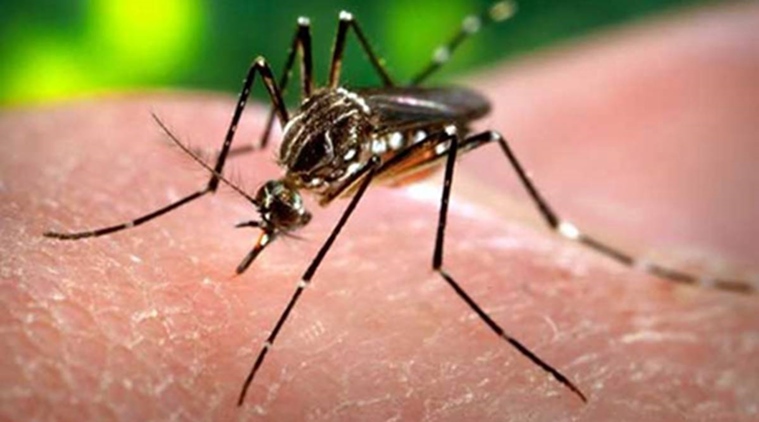Opinion Us versus Aedes aegypti
Epidemics in India are seldom followed by a long-term response.
 Dengue is a mosquito-borne disease caused by a virus
Dengue is a mosquito-borne disease caused by a virus  This year, the WHO has recommended introducing the dengue vaccine in high burden countries like India.
This year, the WHO has recommended introducing the dengue vaccine in high burden countries like India.
A Pune doctor who has treated hundreds of dengue and chikungunya cases in the last several years is struggling to treat his father who has high fever, severe joint pain and swelling on the feet — classic symptoms of chikungunya. Just a year ago, the same doctor had dengue and was hospitalised for a month. He has long since recovered from the viral infection but fails to accept the reality that this highly domesticated aedes mosquito is getting fitter every year just by biting more and more people.
Like other private practitioners from July till October, every year he waits late in the night at his clinic to attend to the lengthening list of patients — a majority from the same building, who have either dengue or chikungunya — uploads the information on the civic body’s website and hopes that next year will be relatively quiet with fewer patients.
Are we, then, losing the battle against the day biter Aedes aegypti mosquito whose tribe has been steadily increasing? It takes just a week for the eggs of the Aedes aegypti to hatch and emerge as adult mosquitoes that seek resting places in closets or clothes racks. Biting leads to increased fitness, so they live longer, lay more eggs and keep transmitting the virus. Be it flood or drought, this mosquito breeds in any water source — puddles, a cup of water, birdbaths, tyre swings, old bottles, trash cans and even the back of a toilet tank.
Aedes aegypti and Aedes albopictus mosquitoes are the primary vectors for dengue, chikungunya, yellow fever and Zika viruses.
According to WHO, taken together, these viruses account for almost 100 million cases of mosquito-borne disease per year. Globally, dengue is the most important mosquito-borne viral disease. In the last 50 years, incidence has increased 30-fold by expanding into new countries and new areas. Chikungunya often occurs in large outbreaks with high infection rates, affecting more than a third of the population in areas where the virus is circulating. In 2014, more than a million cases were reported worldwide.
In India, according to the official figures from the National Vector Borne Disease Control Programme (NVBDCP), from 2010-16, a total of 2.52 lakh dengue cases, 1,097 deaths and 1.56 lakh chikungunya cases have had researchers from the country and abroad wondering about the accuracy of reporting. In 2014, a new study by Donald Shepard and others on the dengue burden in India published in the American Journal of Tropical Medicine and Hygiene found that the economic and disease burden of this virus was substantially more than that captured by officially reported cases and increased control measures merit serious consideration. Official numbers reflect only a small fraction of the full impact of the disease. The researchers had estimated that at least five million Indians suffer from dengue every year.
Rheumatologists dealing with chikungunya assert that official figures may show dramatic reduction since the 2006 epidemic in the country, but till date, it is not supported by the clinical experience or the sale of chloroquine — used to treat chikungunya arthritis. Most epidemics in India are not followed by a long-term response. They are accepted as inevitable accompaniments of the “seasons”, which can at best be contained, only to recur next year, researchers like Biswaroop Chatterjee and Anurag Bhargava from the Himalayan Institute of Medical Sciences at Dehra Dun had cautioned immediately after the chikungunya epidemic of 2005-06.
Chikungunya returned after two decades and the failure to control mosquitoes and the illnesses transmitted by them has resulted in recurrent outbreaks all over the country. Ten years later, there has been an upsurge in the number of cases — with NVBDCP stating there were 10,000 cases across the country till July this year. Delay in reporting each case makes spraying and fogging insecticides inadequate in preventing the epidemic. While Cuba and Singapore have shown how successfully they have controlled the Aedes aegypti, India needs to wake up to realise that there has been a failure to chase and control the mosquito.
This year, the WHO has recommended introducing the dengue vaccine in high burden countries like India. The vaccine that exists has been approved in Mexico, Indonesia and Brazil. Till India decides on the vaccine and scientific research helps treat these diseases effectively, mobilising communities to reduce the number of natural and artificial water-filled container habitats that support mosquito breeding is also a must-do to make the Swachh Bharat mission effective.
So far, a herd immunity exists after being exposed to the virus for so many years. But with newer challenges like the Zika and even Yellow Fever virus finding newer hosts, controlling the mosquito menace is the only long-term solution.




